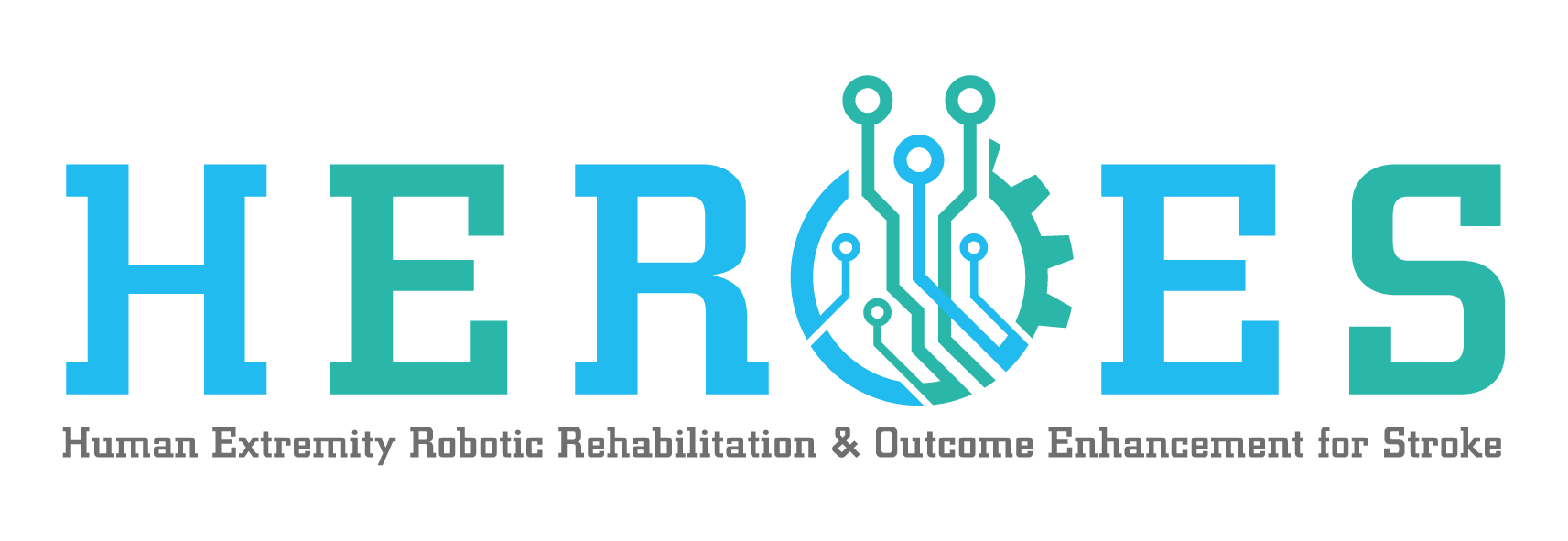The HEROES project aims to investigate and promote dormant neuroplasticity after chronic Stroke with severe residual motor disability. There is sufficient evidence and potential impact to justify considering such research timely and of substantial importance to the field of Neurorehabilitation.
Our protocol will be the first to implement training in multimodal immersive man-machine interfaces, that include BCIs and robotic arms, virtual environments (brain-controlled virtual arms, avatars, and mixed reality), wearable soft robotics with sensors and actuators, and rich audio/visual/tactile stimuli along with serious gaming applications to enhance patient motivation and focus. A dual-control scheme, based on residual neural activity and intent will be the first implementation for neurorehabilitation.
Electromyography-based (EMG) soft robotic and electrical stimulation (EMS) actuation constitutes a novel approach to wearable robotics for neurorehabilitation, especially for Stroke survivors. Visual and kinesthetic sensorimotor brain networks will be also studied using functional Magnetic Resonance Imaging (fMRI) and high-density electroencephalography (HD-EEG) in order to demonstrate and monitor CNS plasticity.
Finally, deep learning artificial intelligence algorithms will be employed in order to study, analyze and exploit EMG and EEG sensing, leading to more efficient sensor data fusion and translation to robotic control signals so as to optimize the assisted rehabilitation process
